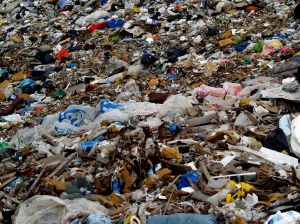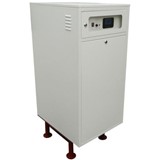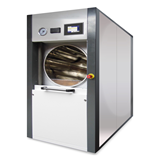Known as "phytocapping", it uses green plants to reduce rainwater flow into old dumps that could release pollution into nearby groundwater and streams or greenhouse gases into the atmosphere. The plants can later be harvested to produce clean energy.
The CRC for Contamination Assessment and Remediation of the Environment and technology firm FibreCell announced the successful demonstration of the technique using a combination of a clay cap and giant reeds to seal an old landfill at Salisbury, SA.
The Leader of CRC CARE’s Prevention Technologies Program, Professor Nanthi Bolan explains: "The giant reed reduces the amount of water which enters the old landfill. This in turn reduces organic decomposition which leads to greenhouse emissions from the landfill, and it prevents toxic chemicals and heavy metals from leaching out of the landfill."
However, he adds, the giant reeds grow so fast they can be harvested for use in producing electricity or methanol for use as a fuel, or biochar for use for carbon sequestration and as a soil improver in agriculture.
"This makes the process of cleaning up an old toxic dump useful and potentially quite profitable," he said.
"The growing characteristics of Giant Reed are well known and understood by Fibrecell Australia after 7 years of extensive research and trials. This knowledge has enabled them to develop effective management protocols that optimise the beneficial uses of Giant Reed without adversely impacting on, or threatening, the ecosystem."
Australia has an estimated 160,000 contaminated sites, many of them being old urban refuse dumps and landfills, which our expanding cities have since grown over and around. Keeping toxic chemicals dumped decades ago contained within these sites so they do not affect surrounding communities or wetlands is a major challenge faced by all municipal authorities, CRC CARE managing director Prof. Ravi Naidu said.
In separate research, the "green cap" of reeds has also proved useful in preventing dust containing toxic minerals from blowing from old mine and mineral processing tailings across inhabited areas, Professor Bolan says.
The CRC has also tested a range of native Australian grasses and plants to see which are most effective at extracting toxic minerals for safe disposal, a form of clean up known as phytoremediation.
A unique feature of the Salisbury project was the use of biosolids – the solid residue left over from sewage treatment – as a nutrient source for the green cap crops, the use of wastewater to irrigate them, and the innovative use of industrial wasteland to grow a product with real market value for energy generation.
"Over time we expect the degraded land to be gradually cleaned up and made safe for other uses, such as urban development," Prof Bolan said.
"Around Australia there are literally tens of thousands of old landfills, dumps and factory sites that are too contaminated to use in their present condition – but which can be cleansed and turned back into high-value real estate by low cost techniques such as green caps.
"This is one way that clean-up science can add billions of dollars in value to Australia – by freeing up more land in urban areas in a very affordable way."
CRC CARE managing director Prof. Naidu said the successful Salisbury and other trials have given Australian an international edge in phytocapping, with major export potential.
"There isn’t a city in the world which doesn’t have health and environmental risks caused by old waste dumps which it has grown over. We expect that technologies like this can form the basis of a highly profitable export industry, potentially worth hundreds of millions of dollars," he said.
"The fact that we are not just dealing with historical contamination, but also prevent greenhouse emissions and generating green power illustrates the creative thought that is going into making Australia a world leader in clean-up science and technology."
CRC CARE, established by the Commonwealth Government under its CRC program in 2005 and renewed for the period 2012-20, is Australia’s leading R&D provider in the field of clean-up science.
It is tackling contamination challenges in soil and groundwater caused by hydrocarbon fuels, heavy metals, perfluoro chemicals, industrial solvents and associated toxic volatile organic compounds across Australia. Its 25 partners include universities, leading industrial firms and government agencies.





-160x160-state_article-rel-cat.png)


-160x160-state_article-rel-cat.png)



-160x160-state_article-rel-cat.jpg)


-160x160-state_article-rel-cat.png)







